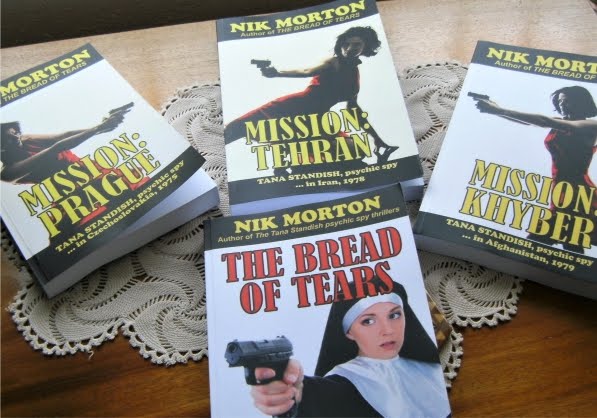My latest work in progress, set in Afghanistan in 1979-1980
has involved a huge amount of research reading. Yes, I’ve travelled through
Pakistan and up the Khyber, but I haven’t been to Afghanistan itself, though
that land has held a fascination as long back as the release of the film, King of the Khyber Rifles!
One of the books I’ve read is Beyond the Oxus by Monica Whitlock (2002). As a BBC correspondent
for central Asia, Whitlock has gleaned a great deal from eye-witnesses. It’s a
fascinating history of the central Asians, the people of Tajikistan and
Uzbekistan. Inevitably, the book also concerns Afghanistan.
Besides personal accounts, Whitlock gives us fascinating
history of a relatively unknown region.
Here, in 973, was born one of the greatest Muslim scholars,
Abu Rayhan Muhammad ibn Ahmad, called Biruni, thankfully. ‘His study of the
rotation of the earth was revolutionary. He calculated longitude and latitude,
observed solar and lunar eclipses in detail, and was an early cartographer,
mathematician, physicist, geographer and anthropologist. He spoke Aramaic,
Greek and Sanskrit as well as Arabic and Persian.’ (p14)
Another important figure was ‘Abu Abdullah Muhammad ibn
Musa, who disseminated through his treatise written in Baghdad in about 825,
the Indian counting system that included decimal places and the concept of
zero. This system reached Muslim Spain about a hundred and fifty years later,
his treatise being translated into Latin in 1120 by an Englishman, Robert of
Chester, who visited Spain to study mathematics…’ It took some seven hundred
years after that treatise before the concept was widely used in Europe. He
brought us the word ‘algebra’, not to mention Arabic ‘sefr’ which gave us ‘cipher’
and ‘zero’. (p15)
There are several tragic stories about lives ruined. One
individual is Damulla Sharif, who fled to Afghanistan in 1927, along with
almost half the population of his town. Some seven years later he chanced returning
and crossed the border, but he was caught. ‘Before he was taken away, he made a
hurried bonfire of his hundred-book library, rather than give them the
pleasure. He spent the next twenty years in and out of prison, accused at one
point of writing “anti-Soviet poetry”. By the time he was finally released in
1955 he could neither see nor walk properly, and was tormented by the memory of
his burnt books. He resumed his studies none the less…’ He worked as a night
watchman and in his free time taught and wrote poetry. (p97)
When Ella Ivanova was two, ‘Stalin ordered the evacuation of
her village… about 450 miles south-east of Moscow, a solidly German corner of
Russia ever since the first pioneers arrived at the invitation of Catherine the
Great…’ Ella heard from her mother and
sister what happened. They had 24 hours to get out, leaving their cow, and
everything but the clothes they wore. They killed a pig, cut it up and took it
with them. They were taken by train to Siberia, and her father was put in a
concentration camp while her mother brought up four children in a one-room hut.
Her mother was almost killed in a fight over a radish. When their teacher left,
the replacement never arrived, she was eaten by wolves on the road. ‘Wolves
hardly ever attack humans, and it tells you how hungry even they were.’
After Stalin’s death the family was reunited and headed for
Tajikistan to find work. ‘We found a paradise on earth here!’ (pp99/100)
Stalin forcibly moved hundreds of thousands of families,
many to Soviet Central Asia, presumably for fear that they would collaborate
with the Nazis or the Japanese. Indeed, ‘compulsory migration had begun in the
1920s, as a means of moving labour to where it was needed.’ In order to increase the production of
cotton, whole villages of Tajiks were moved to the plains, a forced migration
that lasted from 1952 until the 1970s. Remarkably, one man hid his small
library under the hay in the cattle shed and even when forcibly migrated, he
took his books with him. Many had to construct their living quarters, families
perished and starvation was normal; the workers didn’t get paid for six years. ‘They
were set to work in the plantations in one of the hottest inhabited places on
earth, and forbidden to return to their mountain homes for fifteen years.’
(p109)
This is but a very brief overview/review of an interesting
book that takes the history up to 2002.
What shines through is the indomitable spirit of people to surmount the
depredations of despots, to survive in spite of incredible hardship throughout a
turbulent history.
Recommended reading.
A shorter version of this review has
been posted on Amazon.


































